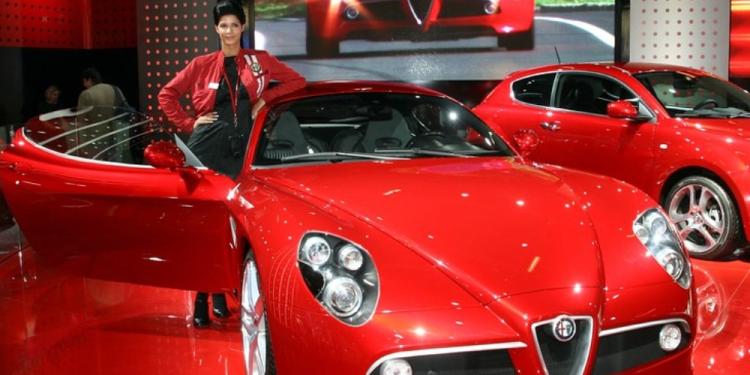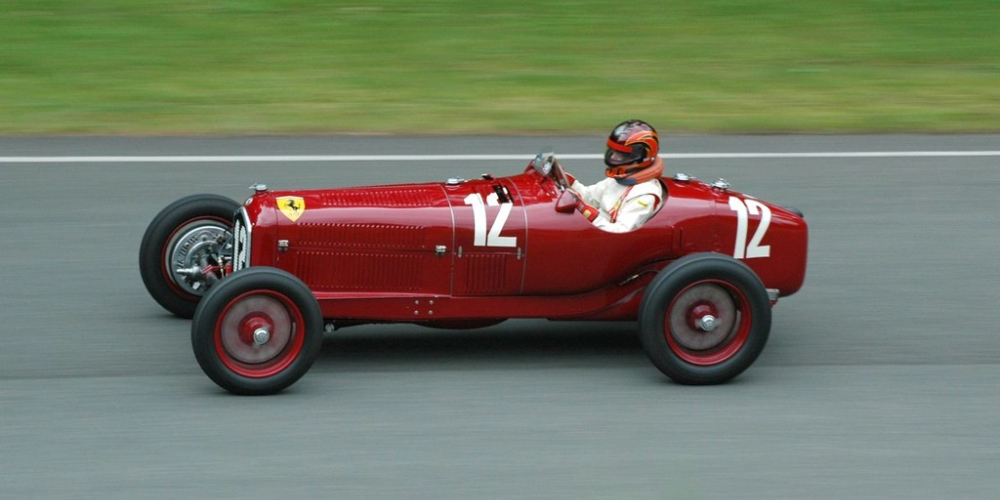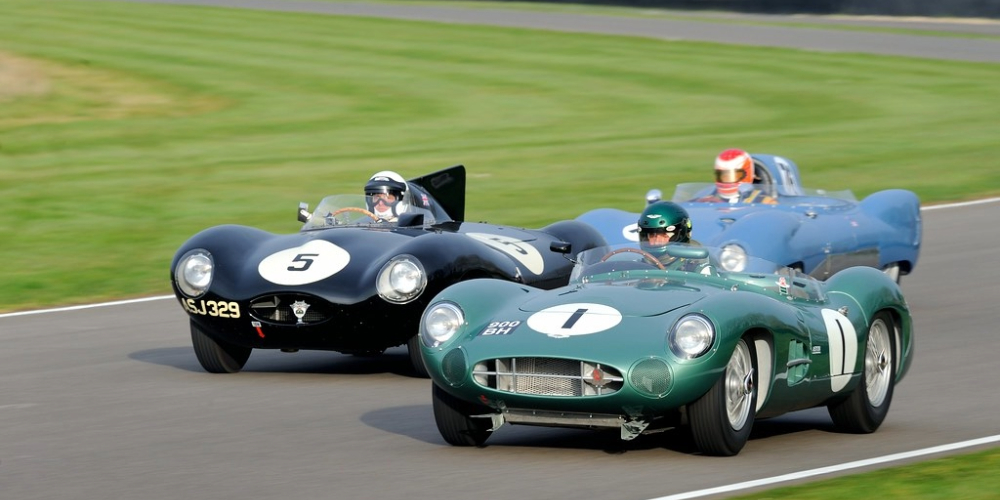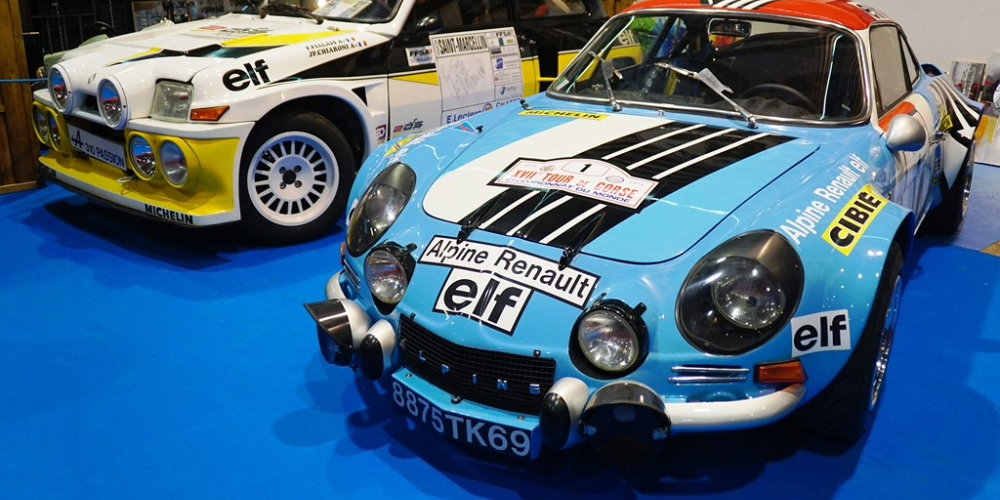Origins of Traditional International Racing Colors in Autosports
Posted: January 17, 2024
Updated: January 17, 2024
-
Did you notice that each country has its car livery?
-
Auto racing colors mean more than it may seem
-
Learn about traditional liveries and their meanings!

Motorsports can be memorable, especially if every car has a distinct livery that strikes a viewer. It’s your chance to learn more about traditional international racing colors so that you can unmistakably define the country of origin for either the car or its driver.
For the past 30 years in autosport and precisely Formula 1, there have been many cars with striking liveries Some of the best examples are the 1990s Williams, the 1997-2005 McLaren, and, of course, Ferrari, who have never changed their signature red color. If you know the history of Ferrari, you understand why this brand utilizes red in their autos. But what about other teams and countries?
Origins of Traditional International Racing Colors
Let’s get back to Ferrari once more. The manufacturer made the cooler red its trademark, so whenever their car is on the street, people imagine it painted red without even seeing it. How did we start associating Ferrari with this color, though? In fact, if one pays close attention, one will realize that French teams usually have blue liveries, British teams, for the better part, adopt varieties of green, and German teams are mostly silver or white.
The answer lies in the pre- and post-WWI era when each country participating in racing events had to adopt traditional international racing colors before driving. In the early 1900s, there was an event called the Gordon Bennett Cup, where nations, not separate teams, competed for the win. The USA, British Empire, Belgium, Italy, France, Germany, and Austria were participants of the GBC. One of the rules implemented in that competition is to come up with a color for one’s nation to distinguish easily.
As a result, France took blue, Belgium yellow, and the USA adopted red. In the 1920s, a forerunner of FIA, AiACr, declared that each country participating in racing events should wear an established color and this tradition exists to this day. Now, when you know about the roots of traditional international racing colors, let’s see what liveries different countries wear in popular motorsports from online sportsbooks in the USA today.
Italy – Racing Red (Ferrari, Fiat, Alfa Romeo)
As was mentioned before, the USA was the first who chose the color red as their distinct livery, which means that Italy raced several different colors in the past. That was until 1907 when they presented a Fiat in rosso corsa (“Racing Red”) at the first-ever “Grand Prix” and won.

Because of Fiat’s and then Alfa Romeo’s success in racing, the automobile association assigned the red color to Italy. Ferrari followed the tradition and took rosso corsa as their primary color. However, it’s not an official Ferrari color. The company’s logo is yellow, and most Ferrari sportscars are yellow. The reason is that yellow is Modena’s color, which happens to be Enzo Ferrari’s hometown. Several special Ferrari F1 liveries confirm that, as those include small patches of yellow. They used that technique for their 1000 Grand Prix and last two home races at Monza.
Interestingly, Ferrari didn’t drive red or yellow in only two races. In the 1964 season, Enzo ordered to get rid of the red color on his cars for the last two races as a boycott of the FIA codebook. Henry Surtees drove his 1512 in a white and blue color scheme and won the title.
Only some Italian teams used red as their primary color. For example, the famous Minardi utilized black and yellow as their distinct colors for the better part of their F1 spell, while Toro Rosso-Alpha Tauri has used mostly dark blue colors.
Great Britain – British Racing Green (Aston Martin, Jaguar, Lotus)
During the Gordon Bennett Cup, Britain had a puzzle to solve as all of their Union Jack colors were taken. In 1902, Selwyn Edge devised a solution for his Napier, featuring an olive green paint job. At the time, green had already gained recognition as a distinct color for machinery and locomotives, areas where Britain had excelled globally in the preceding century.

The subsequent hosting of the 1903 Gordon Bennett Cup in Ireland prompted the British to embrace Shamrock Green. This hue eventually developed into the diverse shades collectively known as “British racing green.” This color variety could be seen on Lotus autos before they adopted that famous Gold Leaf livery. Until 1968, all British-based teams were green, but with the era of sponsorships incoming, fewer and fewer British teams had green as their primary color.
In 2000, Jaguar, believed to become “the British Ferrari,” adopted the classic British racing green. The car was one of the more recognizable, but only for its livery. The automobile itself was atrocious in terms of reliability and speed. You can find the latest Jaguar odds in Formula E at Everygame.
In 2021, one of the most legendary brands returned to F1 with their own team. Surely, we talk about Aston Martin. They revealed in February that their car was color in British racing green and was one of the best-looking cars on the grid. It didn’t surprise anyone that as early as the 1950s, Aston Martin drove in British green at Le Mans and other endurance races. For some people, especially James Bond fans, it would appear that silver is Aston Martin’s trademark color. In fact, it “belongs” to another racing nation.
Germany – White and Silver (BMW, Mercedes, Porsche)
Since 1901, German racing teams have traditionally used white tones as traditional international racing colors. One of the most famous cars built in Germany, Blitzen Benz, was white. Only in the 1930s did Mercedes-Benz diverge from the traditional German white paint, opting for bare metal sheets, leading to the iconic designation of Silver Arrows.
Despite a prevailing myth suggesting that the absence of white paint was due to the 750 kg weight limit imposed later in 1934, the first “Silver Arrows” raced in 1932, predating the weight restriction. However, the absence of paint gives weight advantages, as shown in our F1 era when teams removed huge chunks of paint and kept bare carbon fiber parts naked to the eye to the same drop weight.
During the 1930s, modern monocoque aircraft fuselage construction utilized polished, unpainted aluminum panels. Additionally, the affluent motor-racing community would have been familiar with the heraldic concept that White and Silver are essentially the same color, referred to as “Argent,” just as Yellow and Gold are both termed “Or.” On the other hand, BMW has kept the white ever since the 1900s.
All WEC and GT cars by the Bavaria-based company have white as their base color, including Porsche. Although Porsche isn’t in Formula 1, it still shines at endurance races wearing Germany’s traditional international racing colors. In the late 2000s, BMW Sauber wore white as their main livery color.
France – Blue of France (Alpine, Bugatti, Ligier, etc)
Bleu de France (Bugatti Blue) is a color historically associated with France. It has been a prominent feature in the heraldry of the French monarchy since the 12th century. The golden fleurs-de-lis of the kings were consistently displayed against a blue background. In contemporary times, a brighter version inspired by the blue of the French Tricolour is prevalent, especially in sports. Blue serves as the primary color for French national teams in various sports.

France’s traditional international racing colors are also shades of blue, leading numerous French motorsport teams such as Alpine, Bugatti, Ligier, Matra, Peugeot, and Prost to adopt it. However, there are two exceptions: Citroën and Renault. Citroën has chosen red and white, while Renault has opted for yellow and black. Notably, between 2002 and 2006, Renault F1 cars adopted a blue color in their liveries, not as the national racing color but due to sponsorship by the Japanese cigarette brand Mild Seven.
The Bleu de France came back on the Alpine F1 Team’s car in the 2021 season when the team rebranded, maintaining the association with the color in motorsport.
USA – White Stripes on a Blue Body (Ford, Shelby, Dodge)
Before American teams adopted the stripes, they served as features to tell apart autos from afar. Such was the case, especially for endurance races like Le Mans, since the cars retained their bodywork, unlike in F1. Thanks to this change, it’s now easier to bet on real-time motors sports at Everygame.
In 1951, the Cunningham team first applied racing stripes to their automobiles. These stripes, typically two parallel blue lines running from the front to the rear at the center of the white body, served the purpose of helping spectators easily identify the cars during races. This design evolved from the traditional FIA-registered American racing colors, featuring a white body and blue chassis, a legacy from when racing autos had exposed chassis. The inclusion of the two blue stripes symbolically echoed the chassis colors and gave a clever visual representation of Cunningham himself as his full name was Briggs Cunningham II.
The introduction of racing stripes to road cars took place with the 1965 Shelby Mustang GT350, marking a shift from their exclusive use of racing autos. In the 1960s, road cars like the Renault 8 Gordini started using stripes as a standard element. These are sometimes colloquially referred to as “go-faster stripes” in the context of road autos.
An alternative style emerged, featuring stripes that wrap around the car sideways instead of running down the center – known as “bumblebee stripes.” This distinctive design was notably showcased on the Dodge Charger Daytona race car, and it became a signature feature of Dodge’s “Scat Pack” performance package for muscle autos from 1968 to 1971. In 1996, the Dodge Viper adopted a pair of broad racing stripes, sparking a revival in this fashion trend. These stripes have since been commonly known as “Viper Stripes.”
Japan – White with a Red Circle (Honda, BAR, Red Bull)
Japan’s traditional international racing colors are typically associated with the country’s national flag, which is white with a red circle in the middle. This color scheme has been commonly used in motorsports events where competitors represent Japan. That was the case for most notable users of this livery – Honda in the 1960s and BAR-Honda in 2000-2006.
There has not been a Japanese works team until 2021, when Formula 1’s Red Bull showed what their car would look like if they were from Japan. As a one-off, the Milton-Keynes team, which traditionally utilizes a dark blue and yellow color scheme, painted their cars white with a red circle in the middle. It was supposed to happen symbolically at the Japanese Grand Prix, but due to COVID aftershocks, it was replaced by the Turkish Grand Prix.
Click here to try the best odds at Everygame Sportsbook












